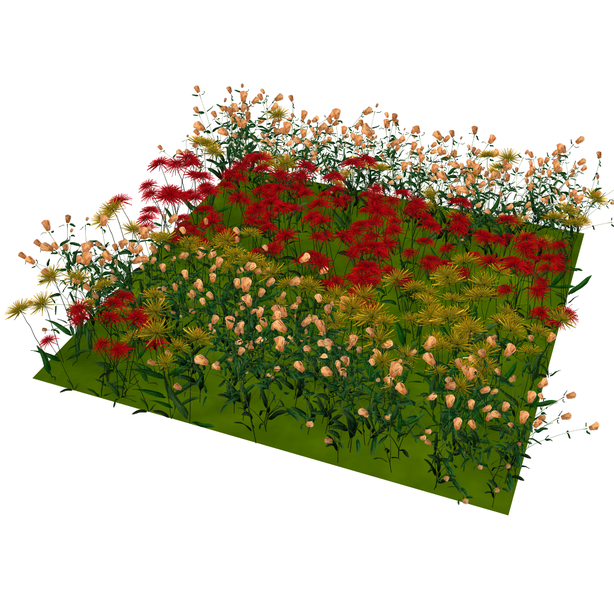You can use strokes from Paint Effects as instanced objects for particles. The image below was created using Paint Effects strokes instanced to particles.
See Paint different ways in 3D for information on painting in your scene, and Instance geometry to particles (single and animated) for information on instancing.

Center strokes on particles
When you instance an object to a particle, the local origin of the object is instanced to the particle. With spheres and cubes, the local origin is the center of the object.
With the NURBS curves that comprise the strokes in Paint Effects, however, the local origin is not directly related to the geometry of the curve. No matter where you actually draw the curve, its origin is the world origin. For example, if you draw a short stroke in the workspace at position 5,0,5 to get a single flower and instance it to a particle object, the flowers will be offset from the particles by 5,0,5.
To center the Paint Effects geometry on your particles, there’s a few things you can do. The obvious one is to start your curve at the origin. Unfortunately, this is hard to do in regular Paint Effects mode because you draw the curve, instead of placing down the CVs with grid snapping. We suggest the following procedures:
To center instanced strokes on particles (method 1)
- Draw your curve near the origin.
- Unhide the curve.
- In component mode, select all of the CVs in the curve and use the Translate tool to move the CVs so the base of Paint Effects geometry (like the base of the flower) is at the origin.
You move the CVs instead of the transform because the top-most translation and rotation of the instanced hierarchy is ignored.
To center instanced strokes on particles (method 2)
- Group the stroke.
- Move the transform of the stroke so that the base of the Paint Effects geometry is at the origin of the new group node.
- Instance the group instead of the stroke.
This has the same effect as moving the CVs.
Tip:Turn on Tube Completion. This lets you make a very short stroke while the tube continues to grow until it reaches the end of its number of segments.